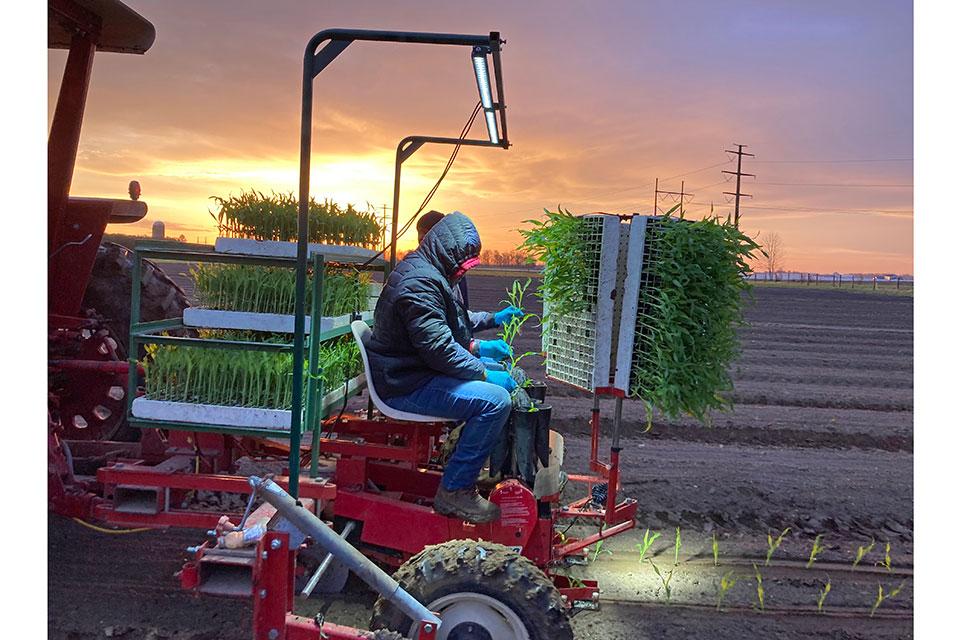Cost-Efficient Options To Increase Potato Yields
Maine potato farmers have new cost-efficient options for increasing yields and improving production sustainability, thanks to research by USDA scientists.
Agricultural Research Service (ARS) plant pathologist Bob Larkin and others at the New England Plant, Soil and Water Research Laboratory in Orono, ME, have been investigating an array of approaches to crop management.
Over several years, the scientists evaluated how cover crops, rotation schedules, soil amendments, and irrigation affect crop production and yield. As part of these studies, they also monitored how soil microbial communities and disease pathogens were affected by the different cropping systems.
The researchers determined that three-year crop rotations generally helped break the host-pathogen cycle more effectively than two-year rotations. The three-year rotations provided better disease control and resulted in higher crop yields. These rotations also supported beneficial soil microbes that improve soil quality by increasing soil organic matter or by inhibiting plant pathogens.
After weighing the costs and benefits of different management systems, Larkin concluded that using a combination of Brassica and sudangrass green manures, fall cover crops, and crop rotations can reduce soilborne diseases by up to 58%, and adding compost to the mix increases tuber yields up to 42%.
Larkin’s group also used mapping programs to study cropland data obtained via remote sensing and soil datasets, and determined that an estimated 153,000 acres of state farmland was devoted to potato production. They also noted that 85% of this acreage had soils that were classified as potentially highly erodible or highly erodible, which highlighted the need for crop management that includes soil conservation strategies.
Fortunately, interpretations of the remotely sensed crop data also indicated farmers are shifting to longer crop rotations that intersperse small grains with potato, which in turn can help restore soil quality that has been decreasing over the years because of continuous potato production.
Results from these studies have been published in more than a dozen journals, including American Journal of Potato Research, Applied Soil Ecology, Phytopathology, and Plant Disease.
Read more about this research in the September 2013 issue of Agricultural Research magazine.










